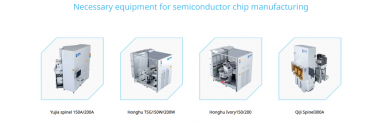Accelerate the research and development layout of third-generation compound semiconductor equipment! Bangxin Semiconductor completed Series B financing
On October 14, according to Zhongnan Venture Capital Fund, Bangxin Semiconductor recently completed Series B financing. This financing is aimed at accelerating the research and development layout of third-generation compound semiconductor equipment and promoting the company to move towards the manufacturing of characteristic processes and advanced process equipment.
Bangxin Semiconductor focuses on providing cost-effective equipment R&D, manufacturing and entire life cycle solutions for the integrated circuit and broad semiconductor industries. The company focuses on the field of third-generation compound semiconductors and has developed many products with independent intellectual property rights, such as 6/8-inch etching machine (HongHu Coral150D/200D) and 6/8-inch tungsten thin film deposition equipment (HongHu TSG150W/200W). In addition, Bangxin is also committed to the research and development and industrialization of plasma glue removal equipment, and successfully launched the domestic 12-inch glue removal machine equipment (QiJi Spinel300A). These products have been put into use on the client side and achieved large-scale production. Its advanced process ultra-low damage glue removal equipment (QiJi Spinel300E) solves key technical problems and fills the domestic equipment gap in the domestic market demand in this field.

Driven by this round of investment, Bangxin Semiconductor will be committed to realizing the vision of "high-end leadership, innovative excellence, and high-quality development". The company plans to build a leading domestic large-scale advanced process and specialty process manufacturing center, the world's top integrated circuit equipment technology innovation center, and a sales and after-sales service center with quick response and efficient processing. This will help Bangxin Semiconductor quickly become a new power source for the integrated circuit industry in the future.
